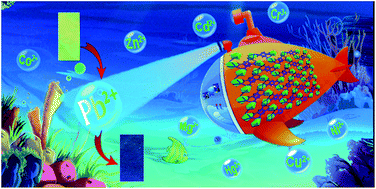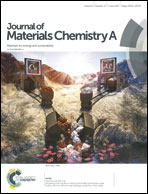A luminescent lanthanide MOF for selectively and ultra-high sensitively detecting Pb2+ ions in aqueous solution†
Abstract
A luminescent lanthanide metal–organic framework [Tb(L)(H2O)5]n solvents (Tb-MOF, H2L− = 3,5-dicarboxyphenol anion ligand) with a 2D network structure was synthesized. The size of the Tb-MOF single crystal can reach up to 6 mm; such large-scale single crystals of MOFs are rarely reported in the literature. Tb-MOF exhibits a strong green luminescence induced by the efficient antenna effect of the ligands. Importantly, it shows an excellent recognition ability on detecting the Pb2+ ion, which is a noxious inorganic pollutant and causes permanent damage to human health and living environments. The perfect linear correlation between the luminescence intensity of Tb-MOF and the concentration of the Pb2+ ions provides this crystal as a reliable and easy-to-use luminescent sensor, which can be applied in pollutant monitoring. As far as we know, it is the first example of a high-efficiency luminescent MOF sensor with millimeter level for detecting Pb2+ ions at a very low concentration with a detection limit down to 10−7 M.



 Please wait while we load your content...
Please wait while we load your content...